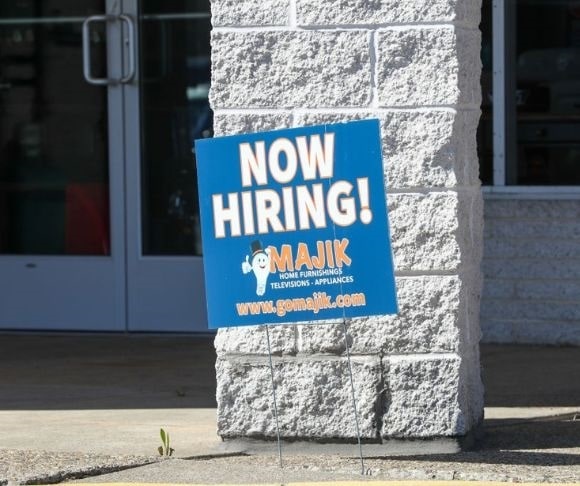Employers have a warning for out-of-work individuals who are not applying for jobs: Get ready for automation. Companies that have reopened their establishments and looking to add bodies to their storefront counters, kitchens, dining rooms, offices, and factories are struggling to find people to fill these positions. Whether it is because of generous federal unemployment benefits or people are searching for something better, businesses are not sitting around, twiddling their thumbs, and waiting for folks to grace employers with their presence. Instead, makers of burgers, surgical tools, and coffee machines are automating their workforces faster than Dr. Anthony Fauci appearing on MSNBC and warning about the droplets of new COVID variants.
Burgers, Fries, and Robots
Before the COVID-19 public health crisis, a growing number of fast-food chains were experimenting with the automated experience, requiring very little human interaction. Companies wanted to mitigate the government-mandated higher minimum wage, sacrificing human employees. But now that these fast-food juggernauts cannot find enough workers to perform routine tasks, such as taking orders and flipping burgers, they are intensifying their automated push.
McDonald’s restaurants are testing robots in their kitchens to dunk chicken nuggets, fish patties, and fries into the hot oil. The home of the Golden Arch is also experimenting with voice-activated order-taking at drive-thru windows. These efforts are in addition to the widespread self-order kiosks and mobile payment technology. McDonald’s CEO Chris Kempczinski recently told a Wall Street conference:
“We have over the last several years spent a lot of money that shows up in the G&A line, looking at better ways to automate the kitchen. And this is could we do automated fryers, could you do automated grills. I mean let’s push the envelope on how you can go with automation.”
Competitors are joining the action, too. Wendy’s has escalated its self-serve kiosk installations. Dunkin’ Donuts is testing an Alexa-style system. Domino’s is running nationwide tests for a self-driving delivery vehicle called Nuro. Even the independent chains are testing automation. Lee’s Famous Recipe Chicken, an Ohio fast-food chain, has implemented an automated voice system to take orders. CaliBurger has installed Flippy, a robot that can flip 2,000 burgers each day, in a couple of its California stores.
Robots Bring Their Lunchboxes
 But while the food sector is garnering all the headlines, the manufacturing industry is accelerating its artificial intelligence push. Because manufacturing is enduring a labor shortage – at home and abroad – factories attempt to reverse lower productivity trends and staffing issues by automating. Despite the enormous one-time and upfront costs of installing robotics, manufacturers are willing to eat the investment to resolve their compounding problems.
But while the food sector is garnering all the headlines, the manufacturing industry is accelerating its artificial intelligence push. Because manufacturing is enduring a labor shortage – at home and abroad – factories attempt to reverse lower productivity trends and staffing issues by automating. Despite the enormous one-time and upfront costs of installing robotics, manufacturers are willing to eat the investment to resolve their compounding problems.
For example, FedEx brought in four robots as part of a pilot project in a Tennessee unit to transfer small packages from bins to conveyor belts for sorting.
Rockwell Automation, an industrial automation solutions provider, reported growth of 6% for the fiscal year, adding that orders significantly increased in November and December. But the firm does not believe robots will fully replace workers. Blake Moret, chairman and CEO, told NBC News that it would be a two-pronged approach.
“The most competitive industrial enterprise combines advanced tech with a workforce comfortable with interacting with that tech and is valued for uniquely human attributes like decision-making skills. If you combine a skilled and engaged workforce with advanced tech, you make a more successful company that can do more, hire more people, and profitably engage in new lines of business.”
Overall, there was a dramatic surge in orders for factory robots throughout the pandemic. According to the Association for Advancing Automation, companies purchased nearly 10,000 robots in the fourth quarter of 2020, up 64% from the same time in the previous year. From North America to Asia, organizations specializing in automobiles, consumer goods, plastics and rubber, and life sciences led the demand push.
Thanks, Government?
Liberty Nation has reported the increasing evidence that the federal government’s sweetened $300-a-week pandemic benefits contributed to the considerable number of Americans refusing to return to the labor market. As a result, despite the improving economic recovery, millions of people remain without work, some by choice. This trend has prompted businesses to adapt to the evolving environment by embracing automation, installing robots, and testing other advanced technologies that complement or replace the human workforce. Still, mandated wage floors, market distortions, and public health restrictions have made it clear that the state has quickened automating the office space. If Skynet eventually enslaves humans and rules the world, blame the government.
~
Read more from Andrew Moran.




